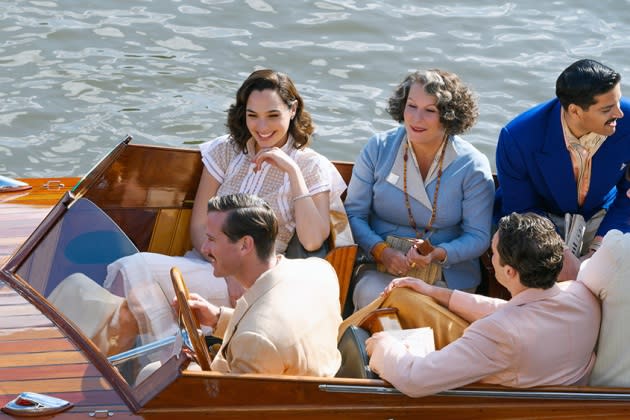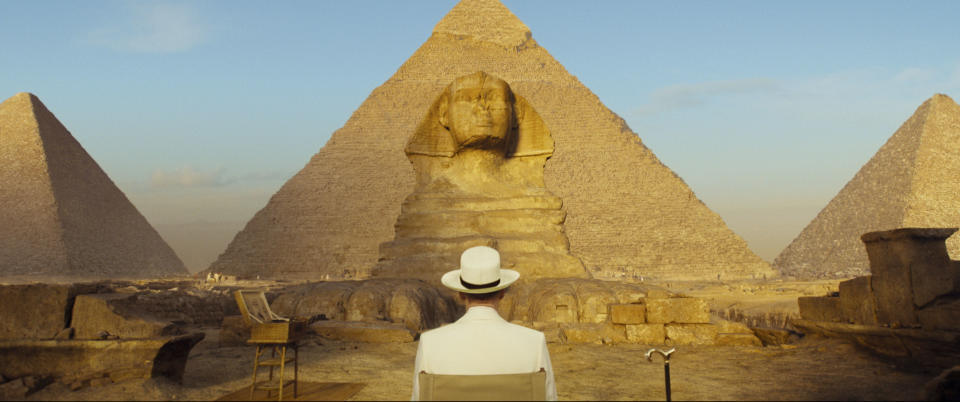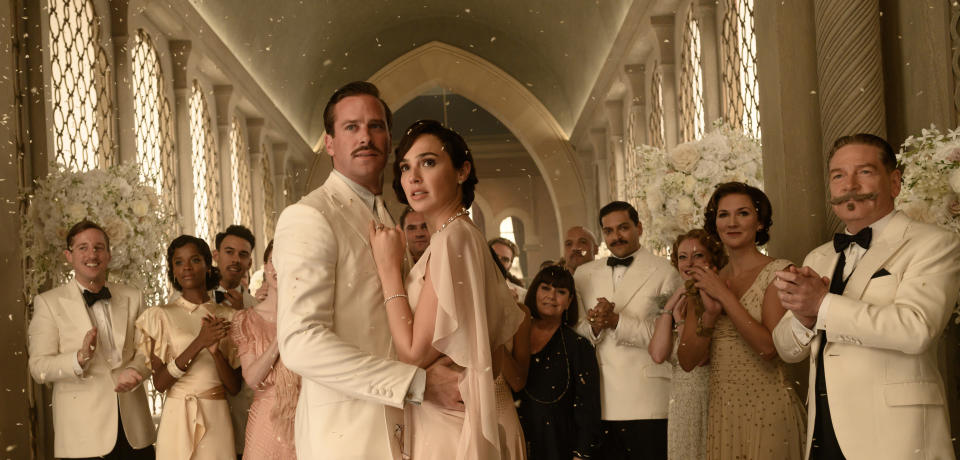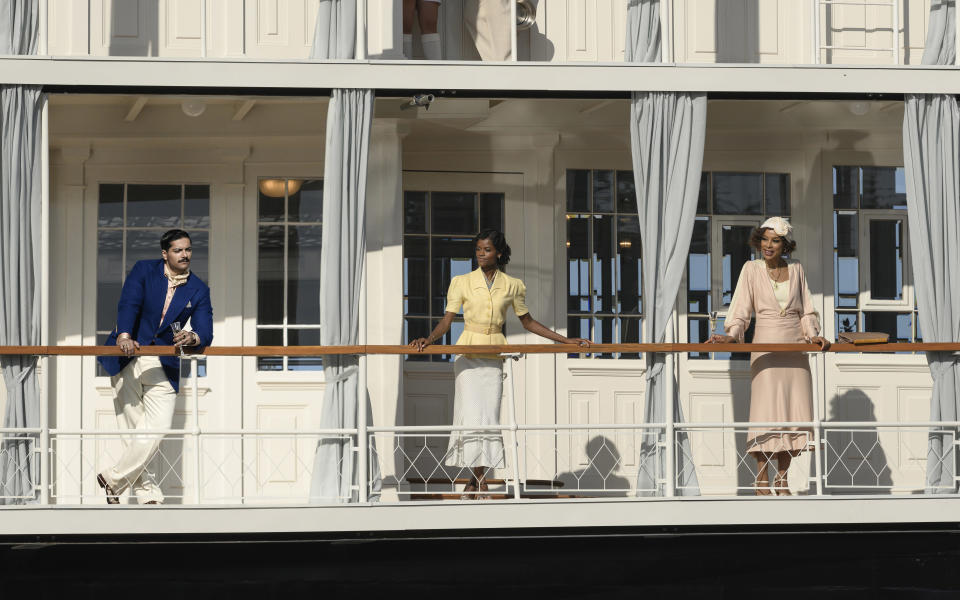Was ‘Death on the Nile’ Really Filmed in Egypt?
- Oops!Something went wrong.Please try again later.
- Oops!Something went wrong.Please try again later.
- Oops!Something went wrong.Please try again later.

Kenneth Branagh’s “Death on the Nile” cruises into movie theaters on Feb. 11 and while the title suggests that the film’s lavish setting was Egypt, more than a little movie magic was involved.
Branagh reprises his role as one of literature’s best-loved detectives, Hercule Poirot, with a cast that includes Gal Gadot, Armie Hammer, Jennifer Saunders, Annette Bening, Sophie Okonedo, Russell Brand, Ali Fazal and Dawn French. The film’s shoot was intended to take place in Egypt, but that proved too difficult. The team then considered Morocco, which often stands in for other desert countries, but by the time cameras started to roll in 2019, it was decided to make England work instead. Production designer Jim Clay says, “Egypt was created with a big talented team of construction people and our director of photography and visual effects supervisors” and built at the Longcross Studios in Surrey, U.K.
More from Variety
Building Egypt
Photo courtesy of 20th Century S
In 1930s Egypt, Poirot runs into his friend Bouc and his mother. The detective is invited to celebrate Linnet’s (Gadot) marriage to Simon Doyle (Hammer), but Linnet feels Simon’s ex is stalking them everywhere they go on their honeymoon, and the celebrations move to the S.S Karnak, a paddle steamer which sets sail down the Nile to Abu Simbel.
Clay explains, “We shot a lot of plate work in Egypt itself [with a second unit] around the pyramids and the Nile and then we built Abu Simbel again on the backlot.”
The first few levels of the pyramid were actually built as a set, while visual effects supervisor George Murphy replicated the top. “Poirot is a man of symmetry and precision, so we planned our shots like that, and it’s breathtaking when you see the sun appear between the pyramids,” says Clay.
And for the Egyptian marketplace scene where the visitors shop for spices, gifts and silks? “That strangely was shot in the Cotswolds in the U.K. We built the marketplace and the Aswan ruin temple there,” says Clay of the scene that filmed at Cotswold Water Park Nature Reserve.
The advantage of shooting in the U.K. meant Branagh would have complete control. “There were all sorts of logistical concerns about shooting in Egypt, Cairo, and with the heat of course,” notes Clay. “Ken plans all of his work so meticulously and while he is shooting, he wants to give absolute maximum time to the actors and performance.”
Photo by Rob Youngson
Agatha Christie wrote her 1937 novel, “Death on the Nile” at the Old Cataract Hotel in Aswan, and the 1978 film version shot at the historic lodging. The interiors and reception area, as well as the dining area were duplicated on a stage at Longcross Studios. Clay explains, “You see the private dining area which leads out to a balcony overlooking the Nile, and that’s where there was a segue between visual effects and the built world, and the elements that George had shot on location.”
It was easy for Clay to tap into the detail, whether it was the architecture or colors, since there was no shortage of references to study from that period. “Since we were shooting on 70mm, it was imperative that those finishes needed to be of the highest possible quality,” he says.
The S.S Karnak
Photo by Rob Youngson
The magnificent S.S Karnak was a real build. It wasn’t seaworthy, though it could move back and forth on railroad tracks to show motion. The huge paddle steamer boat was 270 feet long and 45 feet at its widest point. A stairway traverses three decks. Says Clay, “[Most of what we see] is on the two levels, and there was a little section below deck for the kitchens.”
For inspiration, Clay looked to the Cunard Nile ships of that era. Says Clay, “Those stairs were built for a particular shot – when Gal’s character first boards the ship, Branagh tracks her as she comes down the stairs and walks along the deck — George also built a virtual model of the ship so we were able to pre-viz that journey through the different areas.”
As befitted the period, the overriding influence for the ship’s décor was art deco but he didn’t want to the film to have too obvious or familiar a look. An antique dealer he knew was a collector of Swedish furniture. “We were able to persuade her to rent a lot of stuff, which helped give it that absolute authenticity and yet put a slight different look to the art deco world we’ve seen a lot of,” he says.
Best of Variety
Sign up for Variety’s Newsletter. For the latest news, follow us on Facebook, Twitter, and Instagram.




